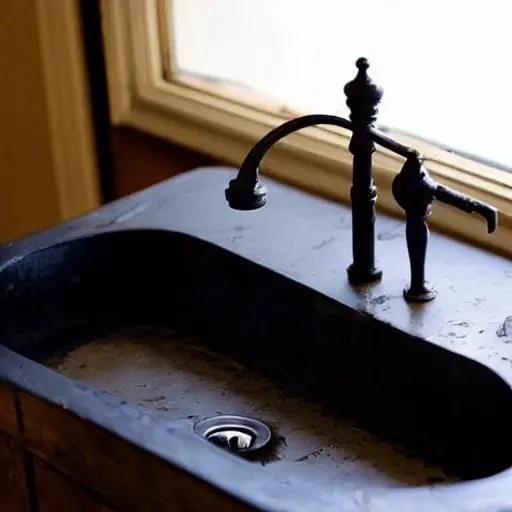
Is your kitchen sink an unsightly relic, a dull, chipped testament to years of culinary adventures and forgotten dish piles? Many homeowners gaze upon their weary basins, lamenting the expense and disruption of a full replacement. But what if there was a remarkably effective, budget-friendly alternative that could breathe vibrant new life into your most hardworking kitchen fixture? Imagine transforming that tarnished eyesore into a gleaming centerpiece, reflecting light and renewed pride. This isn’t a pipe dream; it’s an accessible reality, offering a powerful blend of practicality and aesthetic revival for every home.
Indeed, the process of refinishing an old kitchen sink is rapidly gaining traction as a smart, sustainable solution for modern homes, offering a compelling blend of economic prudence and environmental stewardship that resonates deeply with contemporary values of responsible consumption and resource maximization. Far more than a mere cosmetic touch-up, a professional-grade refinish involves meticulously preparing the surface, repairing imperfections, and applying a durable, long-lasting coating that can rival the look and feel of a brand-new fixture. By embracing this innovative approach, you’re not just saving hundreds, potentially thousands, of dollars; you’re also making an environmentally conscious choice, diverting waste from landfills and extending the lifespan of existing materials. It’s a testament to ingenuity, proving that sometimes, the best upgrade is the one already within your grasp.
Key Insights for Kitchen Sink Refinishing
| Category | Details |
|---|---|
| Suitable Sink Materials | Porcelain, Cast Iron, Enamel Steel, Fiberglass |
| Estimated DIY Cost | $50 ⎯ $200 (for refinishing kit & essential supplies) |
| Estimated Professional Cost | $300 ⏤ $700+ (depending on region, sink condition, and complexity) |
| Time Commitment (DIY) | 1-2 days for preparation and application; 2-7 days for full curing |
| Primary Benefits | Significant cost savings, enhanced aesthetics, eco-friendly, extended fixture lifespan |
| Essential Tools/Materials | Respirator, Gloves, Safety Glasses, Cleaner/Degreaser, Sandpaper (various grits), Etching Acid (optional, for specific materials), Epoxy/Urethane Refinishing Kit (primer, topcoat), Applicators (rollers, brushes) |
| Official Resource Link | HGTV: How to Refinish a Kitchen Sink |
Embarking on this transformative journey requires both patience and precision, yet the rewards are profoundly satisfying. The foundational step, often underestimated, is thorough preparation. Think of it like a painter meticulously preparing a canvas; every speck of grime, every remnant of soap scum, and every loose chip must be rigorously removed. This involves a comprehensive cleaning regimen, degreasing the surface with industrial-strength cleaners, and often, light sanding with fine-grit sandpaper to create an optimal adhesion profile for the new coating. For porcelain or cast iron sinks, a mild etching solution might be carefully employed, effectively opening up the pores of the old enamel, ensuring an unbreakable bond with the primer.
Once the surface is immaculately prepared and thoroughly dry – a crucial detail often overlooked by eager DIYers – the application phase commences. This is where the magic truly unfolds. High-quality refinishing kits typically include a two-part epoxy or acrylic urethane system, comprising a primer and a durable topcoat. Applying the primer evenly and thinly is paramount, forming a robust foundation. Subsequently, multiple thin layers of the topcoat are applied, each allowed to cure partially before the next, much like building up a resilient finish on fine furniture. Expert renovators stress the importance of adequate ventilation and wearing appropriate personal protective equipment, including respirators and gloves, as these chemicals are potent and require careful handling.
The final stage, curing, demands unwavering patience. While the sink might feel dry to the touch within hours, the coating typically requires several days, often up to a full week, to achieve its maximum hardness and chemical resistance. During this critical period, avoid using the sink for heavy-duty tasks or harsh cleaning agents. Once fully cured, your ‘new’ old sink will boast an incredible resilience, resisting stains, chips, and daily wear with admirable tenacity. Industry examples abound, from bustling restaurant kitchens extending the life of their commercial sinks to countless homes revitalizing their domestic spaces, proving the enduring efficacy and practical wisdom of this refinishing technique across diverse applications.
In an era increasingly defined by conscious consumption and intelligent resourcefulness, refinishing an old kitchen sink stands as a shining beacon of smart home improvement. It’s a journey from dull to dazzling, from forgotten to fantastic, demonstrating that with a little effort and the right approach, yesterday’s weariness can become tomorrow’s wonder. So, before you consign that venerable fixture to the scrap heap, consider the transformative power of refinishing. Your wallet, your kitchen, and the planet will undoubtedly thank you for choosing restoration over replacement, embracing a future where beauty and sustainability harmoniously coexist.
